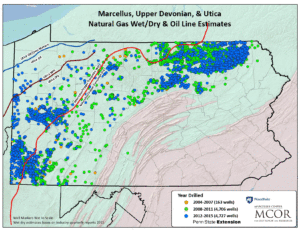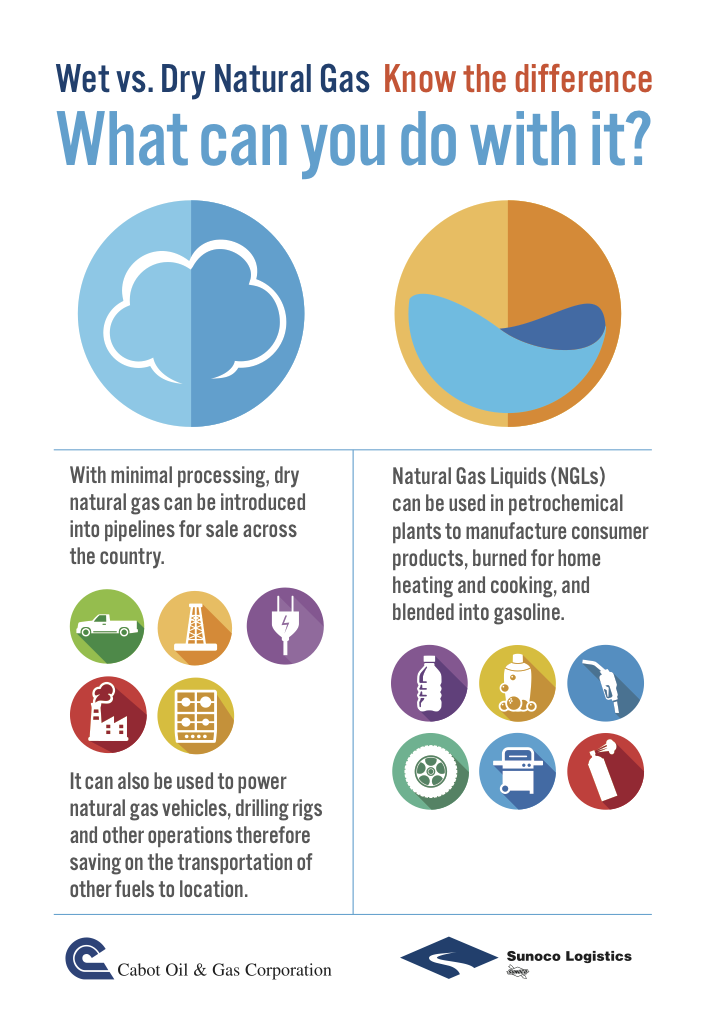Dry natural gas is most likely what you think of when you see natural gas on the news or use it in your home – but why is it dry?
When natural gas is retrieved, it can be considered wet or dry. Dry natural gas is at least 85% methane, but often more. Wet natural gas contains some methane, but also contains liquids such as ethane, propane or butane. The more methane natural gas contains, the dryer it is.
The natural gas used in homes and business for heating, cooling, cooking and electricity generation is dry gas. It can also be compressed and used as a fuel. Before natural gas is used, whether wet or dry, it must be processed to remove hydrocarbons other than methane before the gas is introduced to pipelines. Natural gas liquids removed from wet gas can be used in outdoor grills or even “cracked” to make plastics and other products used in everyday life.

The Marcellus shale contains both wet and dry gas, although wet natural gas is more concentrated in the southwestern portions of Pennsylvania, along with parts of Ohio and West Virginia, while northeastern Pennsylvania, where Cabot operates, is rich with dry gas.
Dry natural gas is vital for the creation of compressed natural gas (CNG) and liquid natural gas (LNG). CNG and LNG are both forms of natural gas that allow for storage and transport where pipelines are not available and are helping pave the way to an energy independent United States.

